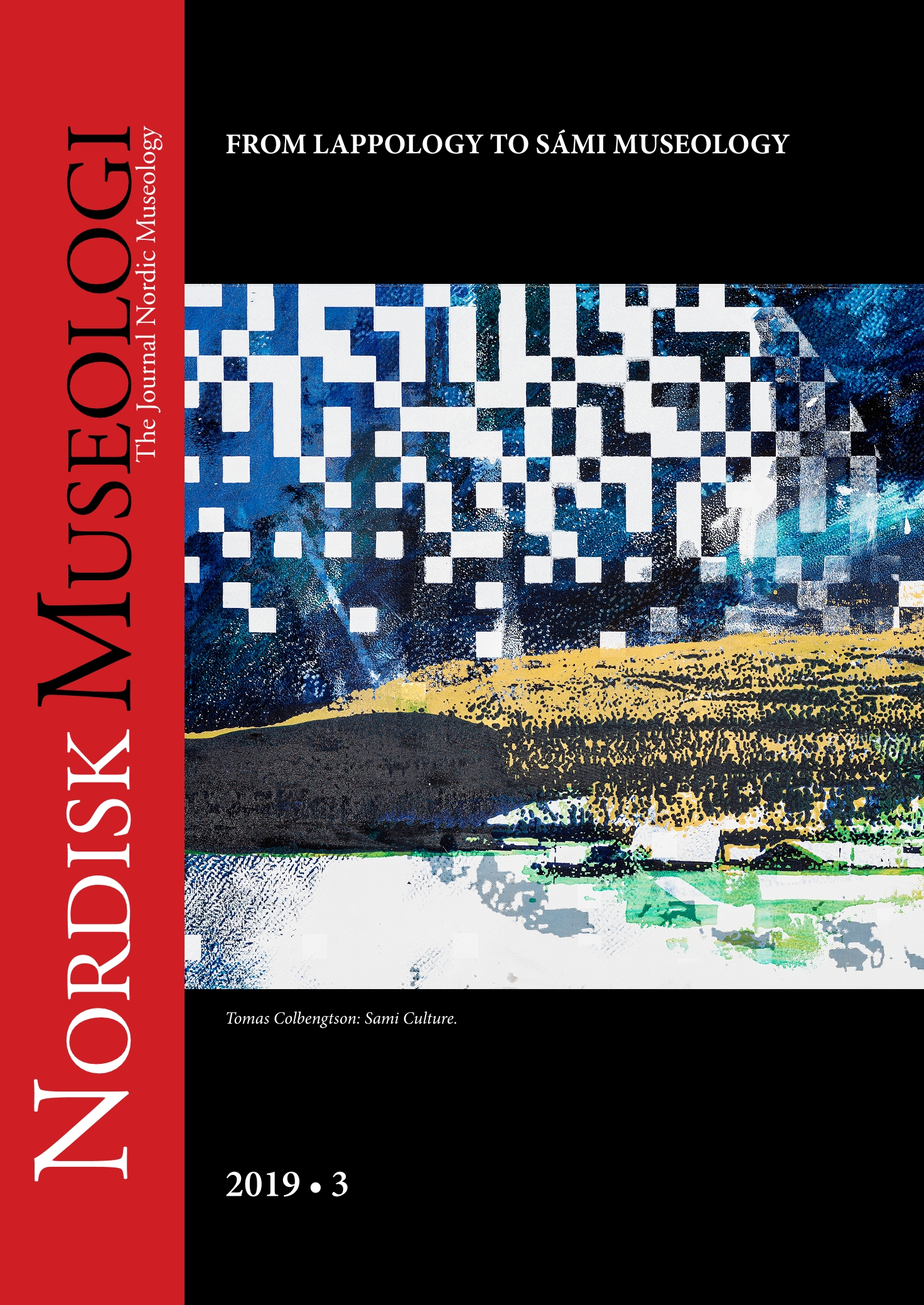The role of museum institutions in relation to research on Sámi culture, history, and society in Norway until the post World War II years
DOI:
https://doi.org/10.5617/nm.7727Sammendrag
This article examines the roles of two Norwegian museums; the Ethnographic Museum in Oslo and Tromsø Museum in Northern Norway, in relation to the production of Sámi research from the end of the nineteenth century until the Post World War II years. By emphasising the academic development of Ole Solberg, Just Qvigstad, Gutorm Gjessing, Knut Kolsrud and Ørnulv Vorren and the development of professional networks, the article calls attention to the establishment of a research strategy in 1913, the establishment of the Institute of Comparative Research in 1923, and the effects of these for studies of Sámi culture and society. Moreover, the article argues that the ethnographer Ørnulv Vorren and Tromsø Museum became important contributors to the advancement of Sámi research and the bolstering of the Sámi ethno-political movement.
Nedlastinger
Publisert
Utgave
Seksjon
Lisens
Innhold publisert i utgaver av tidsskriftet Nordisk Museologi i årgang 2016 og tidligere årganger er beskyttet av Loven om opphavsrett til åndsverk. Dette betyr at tekst og bilder publisert i disse årgangene av tidsskriftet kun kan deles og republiseres med skriftlig tillatelse fra forfatter og/eller fotograf. Fra og med årgang 2017 er innhold i Nordisk Museologi - dersom ikke annet er uttrykt - lisensiert gjennom Creative Commons Licence CC BY-NC-ND.4.0. Dette betyr at innhold kan kopieres, distribueres og spres i hvilket som helst medium eller format, så lenge disse vilkårene er fulgt:
Kreditering: Du må oppgi korrekt kreditering, oppgi en lenke til lisensen, og indikere om endringer er blitt gjort. Du kan kan gjøre dette på enhver rimelig måte, men uten at det kan forstås slik at lisensgiver bifaller deg eller din bruk av verket.
Ikke-kommersiell bruk: Du kan ikke benytte materialet til kommersielle formål.
Ingen bearbeidelser: Dersom du remixer, bearbeider eller bygger på materialet, kan du ikke distribuere det endrede materialet.
NB: Creative Commons-lisensen gir deg ikke nødvendigvis alle de tillatelser som er nødvendig for din tiltenkte bruk. For eksempel kan andre rettigheter, som reklame-, personvern-, eller ideelle rettigheter, sette begrensninger på hvordan du kan bruke materialet.
Forfattere som publiserer i Nordisk Museologi aksepterer følgende vilkår:
Forfattere(n) beholder opphavsretten til artikkelen og gir Nordisk Museologi rett til første publisering, samtidig som artikkelen blir lisensiert under Creative Commons Linsens CC BY-NC-ND 4.0 Denne lisensen tillater deling av artikkelen for ikke-kommersielle formål, så lenge forfatteren og første publiseringssted (Nordisk Museologi) krediteres. Lisensen tillater ikke andre å publisere bearbeidede versjoner av artikkelen uten forfatterens tillatelse.
Forfatteren står fritt til å publisere og distribuere arbeidet/artikkelen etter publikasjon i Nordisk Museologi, så lenge det henvises til tidsskriftet som første publiseringssted. Innsendte bidrag som er antatt for publikasjon eller som er til vurdering i Nordisk Museologi kan ikke samtidig være under vurdering for publikasjon i andre tidsskrifter, antologier, monografier eller lignende. Ved å sende inn bidrag aksepterer forfatteren at bidraget publiseres både digitalt og i printede utgaver av Nordisk Museologi. For mere om vilkår for publisering, se Forfatterinstruksen.



